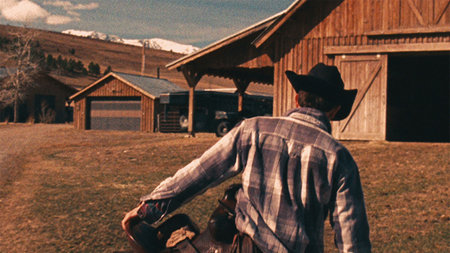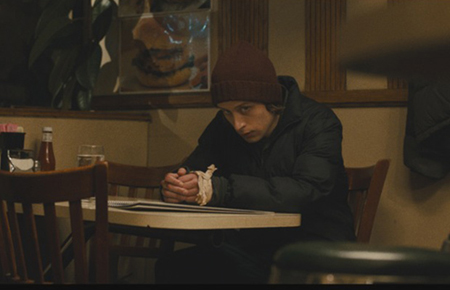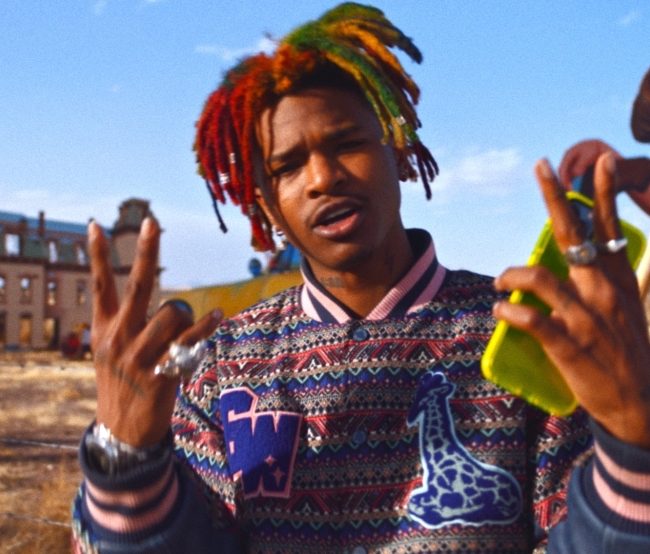TRIBECA FILM FESTIVAL ’14: LANCE EDMANDS’S WRAP-UP
The Tribeca Film Festival has traditionally occupied a somewhat contested space in the cinematic landscape. It seems like no critical coverage is complete without some kind of hand-wringing commentary on Tribeca’s relationship with the film festival circuit, downtown Manhattan, or the state of independent cinema as a whole. But over the last couple of years, it feels like the festival has really defined itself and is perhaps more vital now than it’s ever been. Last year I was lucky enough to have my own film, Bluebird, premiere in the Narrative Competition. As a result, I was able to see a handful of exciting stuff. Stand Clear of the Closing Doors, Teenage, Lenny Cooke, and Hide Your Smiling Faces were among the strong crop that came out of Tribeca in 2013.
Although I’ve never done anything like this before, I was inspired to return this year to see some films and write about the inspiring work that I saw coming out the festival. Conscious or not, I found that the films I was most drawn to in the 2014 edition shared a broad theme. In different ways, they were all portraits of what it means to be a contemporary American man. The expectations, projections, and obsessions of manhood seemed to dominate in the strongest efforts. The documentaries Fishtail and Ballet 422 were both poetic observations of men at work, but they approached their subjects with very different sensibilities. Similarly, Gabriel and Summer of Blood were both hyper-focused on the neuroses and obsessions of a male protagonist, although one was extremely serious and the other extremely not. Meanwhile, love between men, in all its complicated iterations, formed a loose connection between the otherwise wildly different Love is Strange and Young Bodies Heal Quickly. So while these six films may have concentrated their focus on American men, they did so with varied perspectives and diverse cinematic style.
Andrew Renzi’s cinematic ode to the American West marks a distinctive and exciting break from much of contemporary documentary. Focused exclusively on process, landscape, and texture, Fishtail follows a group of cowboys as they work through calving season at the Fishtail Basin Ranch in southern Montana. Filmed in sumptuous 16mm widescreen by ace DP Joe Anderson over the course of just four days, the film is also a triumph of economy. During the climactic birth of a calf, the image stutters to a flash frame as the camera reloads at a pivotal moment, reminding the viewer that all is fleeting, momentary. Light skitters across the surface of the film, grain dancing in the milky shadows, emphasizing the fading splendor of this bygone lifestyle. The rich texture of the celluloid also emulates the unapologetically glorified imagery of the American West as seen in the landscape paintings of Thomas Moran and William Ranny, the works of which served as the film’s primary inspiration. Renzi divides the action into several process-oriented segments, each delineated with expository title cards. Meanwhile, Saunder Jurrians and Danny Bensi’s syrupy, soaring score ties the episodic structure together in a kind of operatic reverie. The soundtrack is punctuated by acoustic songs and other poetic ramblings voiced by leathery desert hero Harry Dean Stanton. The 90-year-old actor’s scratchy intonations about America underscore the sense of a world faded and forgotten. This ranch may still exist, but the frontier is closed.
Fishtail certainly wears its nostalgia and romanticism on its sleeve, making it more or less the opposite of something like Leviathan, which used disposable digital cameras to prioritize visceral anthropology over gauzy beauty. But I was swept up in its painterly approach and corporal reverence, reminding the viewer not only of a way of life that is disappearing, but perhaps a way of filmmaking, too.
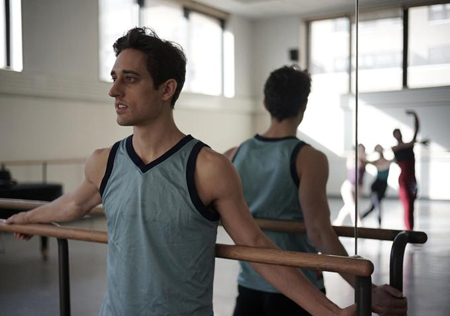 Ballet 422 (Jody Lee Lipes, 73m)
Ballet 422 (Jody Lee Lipes, 73m)
In the engrossing vérité documentary Ballet 422, director Jody Lee Lipes trains his camera on the complex process of creating art in the spotlight. Well known for his distinctive style as a cinematographer, Lipes also directed two other extraordinary films about art and process: NY Export: Opus Jazz and Brock Enright: Good Times Will Never Be The Same. Ballet 422 follows the young, highly touted choreographer Justin Peck as he creates Paz de la Jolla, his second major work for the New York City Ballet. Creativity and youth struggle against tradition and expectation as Peck works with an extensive team of dancers, costume designers, lighting directors, and musicians to bring his ballet to life. Throughout the film, Peck remains calm, in control. He’s almost impossible to read— his signature look is a distant, glassy stare, only the occasional flash of excitement flickering across his eyes. If he’s ever in danger of cracking under pressure, he never shows it, and one gets the sense that perhaps this stoicism is how he copes with what’s at stake. While Lipes chooses to apply Wiseman’s purely observational technique to what is essentially a character study, the institution nevertheless looms large. The conventions, rituals, and demands of creating work within this complicated power structure are the most fascinating elements in the film. At the time he created the Paz de la Jolla, Peck was still a member of the corps de ballet, the lowest ranking group of dancers. The backdrop is the David H. Koch Theater at Lincoln Center, a velvet and gold palace encrusted with oversized diamonds—a veritable monument to highbrow culture. This is the stage of Robbins and Balanchine, a fact reiterated to Peck by the powers that be, lest he forget who came before him. In addition to managing his own creative team, he must also kowtow to the ballet master, the conductor, even the wealthy patrons. It’s a fine balancing act and in the end the film is a shrewd and subtle commentary on the hidden expectations of the creative process. There’s always more to it than just the work—Ballet 422 is about navigating the establishment, contending with history, functioning within an ever shifting hierarchy, and still finding a way to create work that is fresh, vibrant, and can stand alongside the masters. Peck does this, but as the final moment brilliantly captures, he must quickly take his bow and hurry back stage—it’s time to get ready to dance, this time in the background of someone else’s ballet.
Lou Howe’s engrossing, tightly focused character study follows a young man released from a mental institution as he tries to re-integrate with his family and pursue his one true love, pretty much with terrible results. Sort of like a late-teen version of Peter Greene in Lodge Kerrigan’s Clean, Shaven, Rory Culkin manically skulks through the alleyways and shrubbery of the Upper East Side, stumbling toward an inevitably bleak confrontation with the woman he thinks will save him—pissing people off and slicing himself up along the way. It’s a committed performance by an intelligent actor, although his mania is perhaps not quite as well defined as other recent examples of this hysterical-man-in-the-streets subgenre. (Will anyone ever touch the sheer brilliance of Dore Mann in Frownland?) But Howe’s focus isn’t all grit and gloom. Gabriel’s family treats him with empathy and patience, which only serves to push him further away. The best moments come from this contradiction, as seen in a devastating scene between Culkin and his mother, played by the excellent Deirdre O’Connell, in which they discuss their family’s painful history with mental illness. Gabriel absorbs the heartbreaking truth about his deceased father, but it doesn’t help him, he’s too trapped inside the prison of his own mind. You can see that his soul is desperate to escape and it breaks you. Peppered throughout with strong performances (particularly from the women, including Lynn Cohen, and Emily Meade), Gabriel is less about mental illness than it is about a young man’s need for connection—true love that feels pure and selfless. Perhaps that’s what we all want, but Gabriel is no angel. As a result, his search for that ideal becomes an obsession and his misguided attempts at happiness only burn things to the ground.
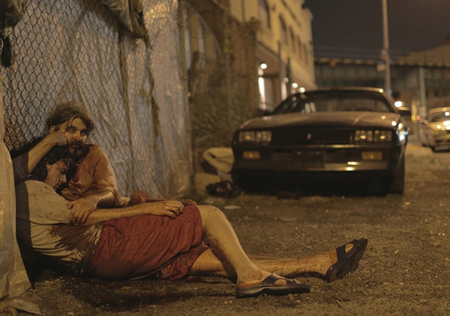 Summer of Blood (Onur Tukel, 86m)
Summer of Blood (Onur Tukel, 86m)
Summer of Blood is yet another finely tuned character piece about an American man, although this time less profound than hilarious. Writer/director/star Onur Tukel plays Erik, a schlubby loser who’s too selfish and neurotic to commit to his patient, understanding girlfriend, Jody (Anna Margaret Hollyman), who dumps him as a result. One night while Erik is aimlessly wandering the deserted streets of Bushwick feeling sorry for himself after a date gone awry, a stranger approaches him. Played with a casual sense of menace by the filmmaker Dustin Guy Defa, we soon realize that the man in the shadows is actually trawling the outer boroughs for a late night snack. Once bitten, Erik begins to assume certain powers—hypnotism, confidence, sexual prowess— but also a thirst for blood. Despite the fact that he must halfheartedly commit a series of grizzly murders, this newfound strength actually gives him back control of his life. For a moment, it seems as if becoming a vampire might be the best thing that’s ever happened to him. But as he tires of his sexual conquests and becomes more and more consumed by his selfishness, he begins to realize that he misses Jody and that he must change his boorish ways to get her back.
One of the funniest films I’ve seen in a very long time, most of Summer of Blood‘s pleasure is derived from Tukel’s grotesque, yet oddly endearing central performance. Chalk full of droll one-liners and slapstick farce, it’s the perfect blend of relationship comedy and campy satire. Sure, it’s sloppy as hell—but somehow the film’s technical ineptitude only serves to make its shambling, unfocused quality that much more appealing. The film also makes the most of its obviously limited budget. Many of the scenes are staged in the exact same place, in the exact same way, shot on two cameras with ping-ponging close ups. But again, these limitations define Erik’s pathetic, limited world, so you accept it as part of the narrative where it might otherwise seem lazy. It doesn’t hurt that Tukel is a brilliant comic performer—many of the scenes exist at the very edge of chaos and he’s able to corral that energy in just the right ways. With a little more attention to story structure and a competent team of craftsman, Tukel could easily make a mainstream comedy. But one gets the sense that his signature brand of manic playfulness would probably get beaten out of him under such circumstances. So if Tukel can scrape together some change to make the sequel (Winter of Blood?), I’ll totally be the first in line.
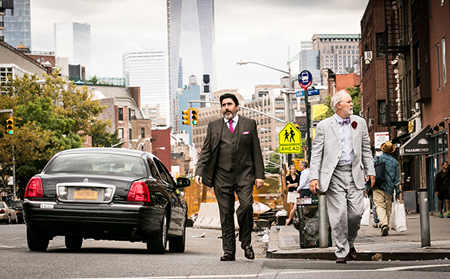 Love Is Strange (Ira Sachs, 95m)
Love Is Strange (Ira Sachs, 95m)
The quintessential image, present in all of Ira Sachs’ films, is the reaction shot of faces in a crowd. Love Is Strange features several such moments; during a marriage ceremony, a musical performance, a party. These aren’t just obligatory cutaways, but cinematic studies of human faces, each with their own story and lived-in emotional weight. One gets the feeling that we could enter lives at the margins of the narrative and find drama just as dense and complex as the one at hand. Such is his approach to the ensemble. Everyone gets the human treatment, from de-facto leads John Lithgow and Alfred Molina, to the Russian housekeeper, seen only in a few short vignettes.
The ever-crossing strands of circumstance are Sachs’ specialty, and Love Is Strange vibrates with a feeling of at-the-brink chaos recognizable in our own familial quarrels. At the heart of the film is the deeply felt love between Ben and George, a couple coming up on their 39th year together who can finally tie the knot. While their late-in-life marriage is the hard-won union of a long and supportive relationship, it unexpectedly sets off chain of events that force them apart. Money is tight, space is limited, and when they have no choice but to shack up with friends and family in separate apartments, the unspoken boundaries of their relationships get tested. Its politics are subtle, never scaled beyond eye-level, though if you live in New York you’ll surely appreciate the commentary on the financial squeeze of the creative class. The film’s many strands and tangents are woven together seamlessly by editors Michael Taylor and Affonso Goncalves. The intercutting always feels suitably parenthetical, necessary, and never driven by a false sense of narrative momentum.
Tender and warm, Love is Strange is a tribute to the pleasures and difficulties of love. It’s big-hearted without being sentimental, the kind of film that earns its emotional tone. As Ben says after attending a moving performance of Henryk Wieniawski’s Legende Op. 17, “It’s already romantic. There’s no need to embellish it.”
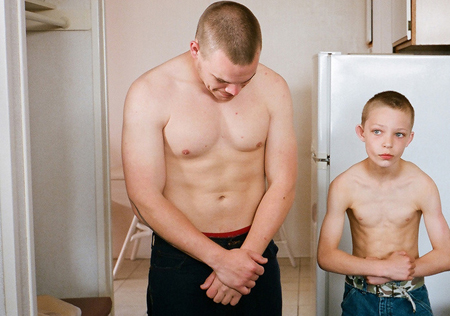 Young Bodies Heal Quickly (Andrew T. Betzer, 104m)
Young Bodies Heal Quickly (Andrew T. Betzer, 104m)
Short on traditional narrative and long on ambiguous violence, Young Bodies Heal Quickly focuses all of its awkward, freewheeling energy on the exploits of two young brothers on the lamb. Essentially an episodic road movie doused in lighter fluid and set ablaze, the film follows these two blank-faced youths as they make their way across down-and-out America, on the run from the accidental killing of a young girl. While the initial appearance of BB guns, vandalism, and wayward teens places the film in that ever-familiar post-Gummo territory, in the end Young Bodies has more on its mind than simply documenting abject life on the margins. Featuring wild-eyed turns from gritty-indie-dream-girl Kate Lyn Sheil and Bruno Dumont approved Julie Sokolowski, the film begs comparison to other recent examples of backwoods indie-realism Sun Don’t Shine, Francine, and Jess+Moss. Although the most formless and scattershot of the bunch, it nonetheless mines its open scenario for some truly startling moments.
After first seeking refuge with their hysterical sister (Sheil) and killing time on the Ocean City boardwalk with a sexy French maid (Sokolowski), the boys eventually find their way to their father’s riverside compound. Their dad (Daniel P. Jones, ostensibly playing himself) is a bearded Libertarian woodsman and avid collector of Nazi paraphernalia. In a casually subversive scene, Dad asks his ten-year-old son to don a tank top emblazoned with a swastika, instructing him to “act proud” as he photographs him. He tells his boy not to be scared. “History, good or bad, it can’t hurt you.” But later on he drags his sons to a bizarre Vietnam war re-enactment in a dense forest, instructing them to dress up as the enemy Viet Cong. Gunfire rings out through the woods as the film erupts into a disturbing montage of wartime role-play. The boys are forced to crawl through the forest, truly terrified of these middle-aged men playing dress up, armed to the teeth with real weapons. This queasy conclusion brings the film into sharp focus, making it clear that these young men are blank canvases onto which get projected these faded, perhaps outdated notions of masculinity. Shot on granular 16mm by intuitive cinematographer Sean Price Williams, Betzer’s film is an inventive, textured riff on the darker sides of manhood.
While I didn’t get to see nearly as many films as I’d liked to, I was pleasantly surprised by the quality of what I did see. A handful of films I caught didn’t fall under H2N’s “American Independent” header, but I was pretty jazzed up about the Chinese genre-bender Black Coal Thin Ice and heard great things about the Israeli comedy (and Grand Jury Prize winner) Zero Motivation. I really wanted to see Five Star and Point and Shoot, but didn’t have time. Hopefully all these films get out into the world so I can see them again, some of them several more times.
— Lance Edmands







